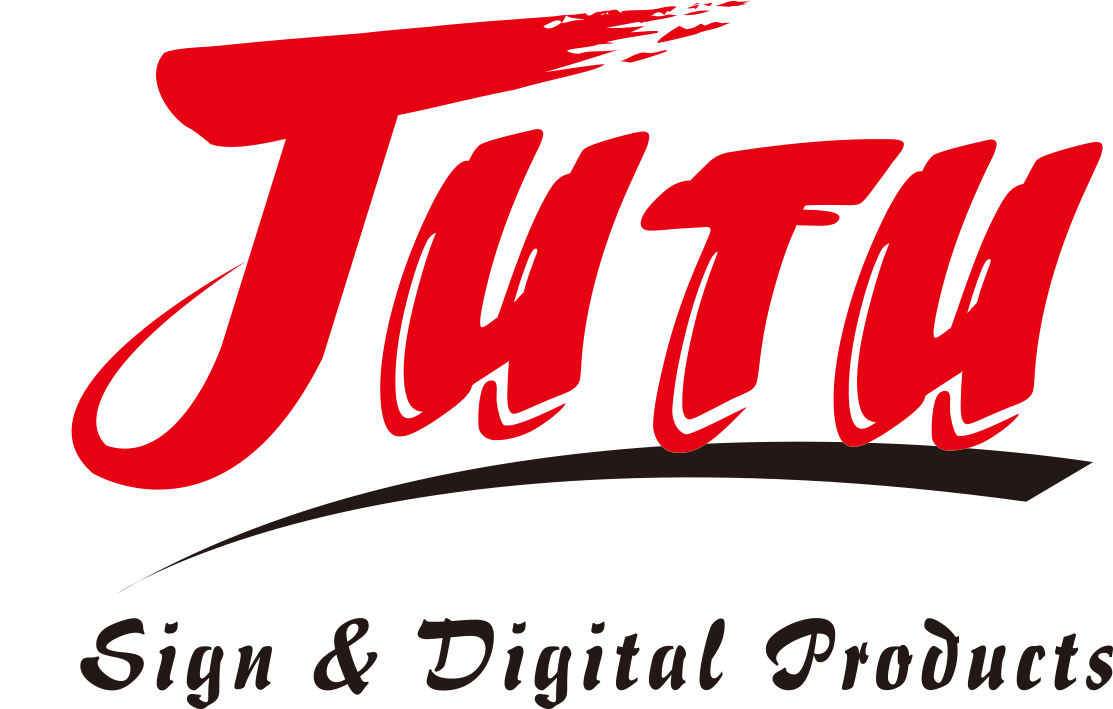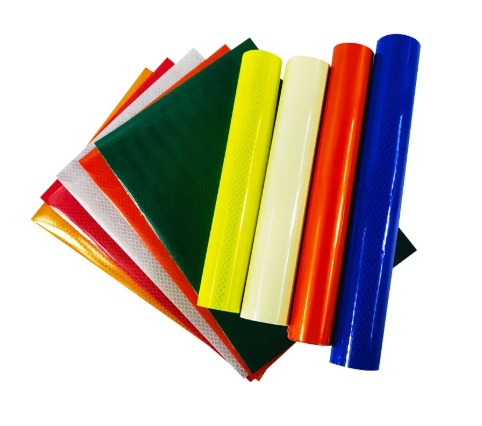Key Types of Reflective Sheeting for Signage
Engineer Grade: Cost-Effective Solutions for Low-Traffic Areas
Engineer grade reflective sheeting remains a go to option when budget matters most for signage projects, particularly in places where not many cars pass by. We see this stuff all over parking garages, neighborhood streets, and on business campuses where traffic isn't constant. What makes it stand out? For about half what premium materials cost, it still gives decent visibility at night. The real selling point though is the wallet friendly price point. Most small businesses find they get enough glow from these sheets without breaking the bank compared to pricier alternatives. According to recent market data from Signage Today magazine, companies switching to engineer grade materials report saving around 30% on both setup and ongoing upkeep expenses. Makes sense why so many property managers stick with this option for their everyday sign needs.
High Intensity Prismatic (HIP): Meeting DOT Roadway Requirements
High Intensity Prismatic or HIP sheeting was created specifically to meet those tough DOT standards for road signs. What makes HIP stand out? Well, it reflects light better than most materials around, which is why we see it on busy roads and at intersections where visibility matters most, even during bad weather or low light conditions. The stuff has to pass strict tests regarding how bright it stays over time and how long it lasts before needing replacement. That's why many states require HIP sheeting for their road signs in places with heavy traffic or complex driving situations. According to DOT reports, installing these highly reflective signs actually helps cut down on crashes. Studies from several highway departments show fewer nighttime accidents occur where HIP signs are present compared to older sign types. For drivers, this means safer travels no matter what time they hit the road.
Diamond Grade: Maximum Brightness for Critical Signage
Diamond Grade reflective sheeting really shines when it comes to brightness and how well it reflects light, which matters a lot for those red and yellow warning signs we see in construction zones or during emergencies. What makes this stuff special is that it keeps signs visible even when rain is pouring down or snow is flying around. For highway departments and contractors working on roads, getting sheeting that lasts through years of exposure to sun, salt spray, and occasional vandalism is absolutely worth the investment. The way Diamond Grade is constructed lets it handle whatever Mother Nature throws at it, so it works great in coastal areas where salt air eats away at regular materials or mountain passes where temperatures swing wildly. Transportation safety boards have repeatedly backed up what field workers already know – these signs just work better than cheaper alternatives. Clear messages on the road mean fewer accidents for drivers and safer working conditions for crews dealing with fast-moving traffic.
ASTM Standards and Compliance Requirements
Understanding ASTM D4956 Classification System
ASTM D4956 plays a major role in the reflective sheeting market by setting down clear guidelines for evaluating how good these materials actually are and where they work best. Reflective sheeting gets sorted into different categories depending on things like how bright it reflects light back (retroreflectivity), how long it lasts under normal conditions, and whether it stands up to rain, snow, or extreme temperatures. When companies know what each category means, they can pick out sheeting that really fits what they need for their particular job site or application. The ratings aren't just numbers on paper either they matter because they show if a product will perform well while still being worth the money spent. Looking at data from ASTM itself, sticking to these standards isn't just recommended but necessary to keep road signs working properly and keeping drivers safe at night when visibility matters most.
Matching Sheeting Types to Regulatory Specifications
Getting the right reflective sheets to match both local rules and federal specs isn't just good practice it's absolutely necessary for staying safe and out of trouble. Most governing agencies have pretty strict guidelines about what counts as acceptable signage material. They specify things like how bright the sheets need to be under different lighting conditions and how long they should last before needing replacement. Companies ignoring these rules risk getting hit with fines and potentially endangering people who rely on clear visibility from those signs. The main points usually cover stuff like minimum reflectivity levels and whether certain materials hold up well in harsh weather environments. Manufacturers definitely need to know this stuff inside out because failing to comply can lead to serious financial headaches down the road. Take one recent example where a business was slapped with thousands in penalties simply because they used cheaper sheets that didn't meet nighttime visibility standards. That kind of oversight could have been avoided with better research upfront.
Environmental Durability Considerations
Weather Resistance: UV Protection and Moisture Tolerance
When picking out reflective sheeting for signs, how well it stands up to weather matters a lot, particularly regarding protection from UV rays and handling moisture. Signs left out in the sun and rain tend to lose their effectiveness over time. Take places with intense UV exposure like tropical climates or areas near coasts where saltwater air hangs around constantly these conditions really take a toll on reflective materials. Research indicates that sheeting exposed to tough environmental elements breaks down quicker than what we might expect, which means reduced visibility and potential problems meeting regulations. For better weather protection, look at sheeting made with strong UV inhibitors built right in plus good defenses against moisture damage. Also worth checking? The specs provided by manufacturers about how their product holds up across different climate zones before making a purchase decision.
Impact Resistance for High-Traffic Urban Environments
Signage takes quite a beating in busy city streets where vehicles, bikes, and pedestrians constantly pass by. That's why impact resistance matters so much when choosing reflective sheeting for signs. Good quality materials hold up against those little bumps and scrapes that happen daily without needing constant replacements, which saves money in the long run. Most industries have set guidelines about what kind of performance their signage should handle under regular city conditions. Take a look at how dense or flexible a material feels - these characteristics often tell us whether it will survive those inevitable impacts. Cities across the country report lower repair bills and longer lasting signs when they invest in better impact resistant materials. Anyone responsible for maintaining street signs knows firsthand how frustrating it gets replacing damaged ones all the time. Picking sheeting that passes those tough urban tests isn't just smart business sense, it keeps messages visible and ensures everyone stays safe according to traffic regulations.
Material Innovations in Signage Substrates
Traditional Aluminum vs Recycled Plastic Options
Signage material discussions are changing fast these days as more people move away from old school aluminum toward new recycled plastic alternatives. Aluminum used to be king because it lasts forever and looks great, but honestly doesn't do much for our planet's health. Recycled plastics tell a different story though they cut down on trash mountains while still being pretty tough stuff. Recent surveys show consumers increasingly want greener products, so plenty of companies now stock up on recycled materials just to keep their eco aware clients happy. The good news? These recycled options hold up just fine when it comes to staying strong and lasting long enough for most signs. Switching to sustainable materials makes sense for business owners who want to shrink their carbon footprint without sacrificing sign quality or customer satisfaction.
EcoStrate: Flexible Plastic for Sustainable Signage
The signage industry is seeing something fresh from EcoStrate's range of flexible plastics that are catching attention because they're good for the environment. What sets this material apart is how well it works in signs while still being bendy when needed something most standard materials just can't do. People love talking about how green EcoStrate really is since it incorporates lots of recycled stuff, cutting down on trash and reducing carbon emissions across the board. Sign makers have responded positively to EcoStrate, mentioning how easy it adapts to different projects and stays friendly to our planet at the same time. Material specialists point out that EcoStrate manages to combine solid quality with eco-consciousness, making it stand out against older materials we've used for years. More companies switching to EcoStrate means the whole industry is moving toward greener choices, which fits right into what everyone wants to see happen globally regarding sustainability.
Optimizing Retroreflective Performance
Glass Bead vs Microprismatic Light Reflection Technology
When talking about retroreflective tech, picking between glass beads and microprismatics really matters for how well signs work in different situations. Glass beads basically have lots of small beads that spread out light and send it back toward where it came from. This makes them good for places where people need to see something clearly even when there's not much light around. On the flip side, microprismatics work differently by using these tiny prism patterns to bounce light straight back more effectively. They tend to perform better when light conditions keep changing throughout the day. Both options have what they do best. Glass beads are great for keeping things visible on dark roads and easier to install too. Microprismatics just shine brighter in complicated lighting setups though. Most industry folks point to microprismatics as the brighter option overall, but experienced professionals will tell anyone that matching the right tech to the actual environment always comes down to what works best for each particular situation.
Color Consistency and Nighttime Visibility Standards
Color consistency remains essential in reflective signage when it comes to both safety requirements and regulatory compliance. When colors stay uniform across signs, drivers actually receive the correct message they need, something absolutely necessary for safe driving conditions. At night especially, visibility standards require that reflective materials work well even when light levels drop dramatically, helping prevent crashes while making important messages stand out clearly. The Traffic Signs Manual sets down pretty strict rules about what colors should look like and how reflective they need to be so signs work properly whether it's sunny or pitch black outside. Research shows following these specs really does cut down accident rates substantially. Selecting appropriate reflective sheeting means getting familiar with these visibility requirements first, then making sure whatever material gets chosen meets them head on to keep our roadways safer for everyone involved.
FAQ Section
What is engineer grade reflective sheeting used for?
Engineer grade reflective sheeting is often used for signage in low-traffic areas like parking lots and local roads. It offers visibility and performance at a lower cost compared to higher-grade materials.
Why is High Intensity Prismatic (HIP) sheeting important?
HIP sheeting is important because it meets Department of Transportation requirements and enhances visibility on high-traffic roadways, thus reducing nighttime accidents.
What are the benefits of using Diamond Grade reflective sheeting?
Diamond Grade reflective sheeting provides maximum brightness and durability, making it suitable for emergency signs and construction zones. It's designed to remain visible under harsh weather conditions.
How do ASTM D4956 standards help in selecting reflective sheeting?
ASTM D4956 standards classify reflective sheeting by performance characteristics, helping businesses choose materials that balance cost and quality for specific applications.

